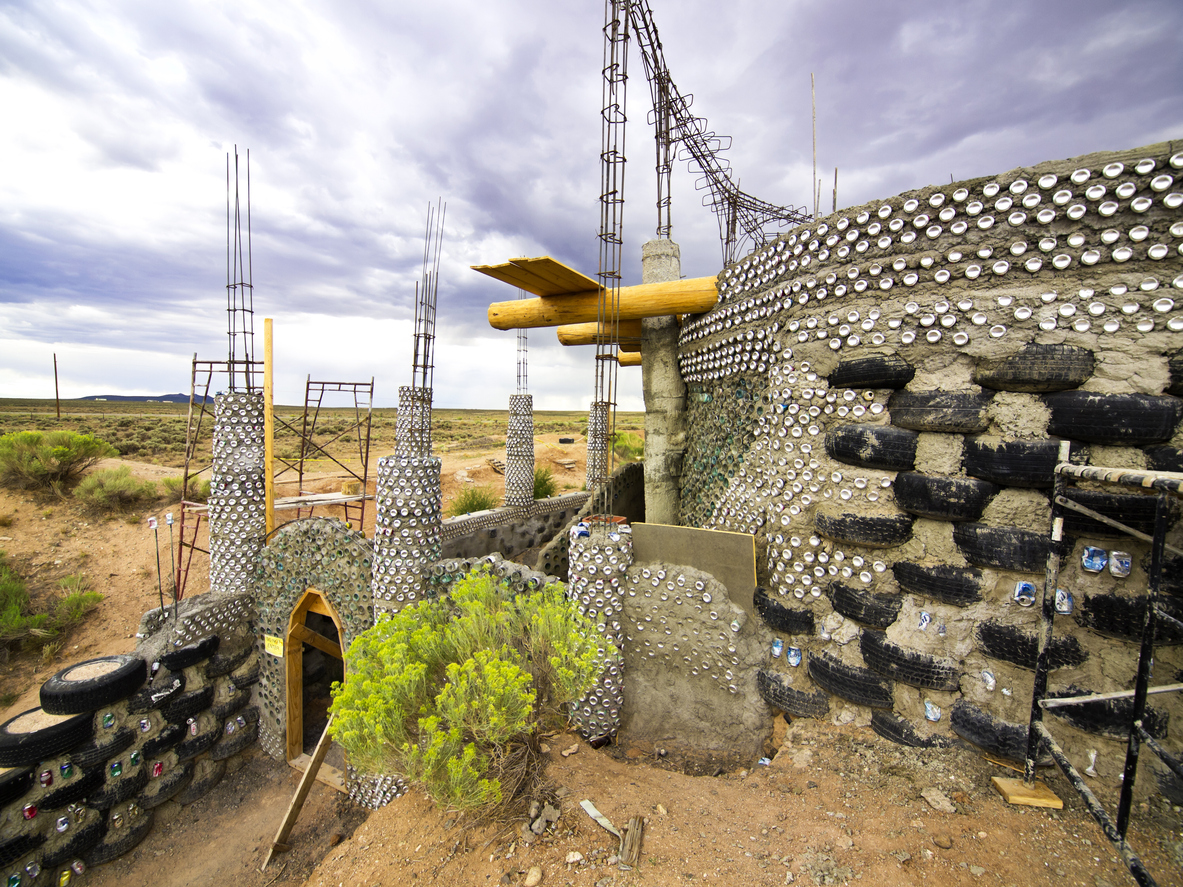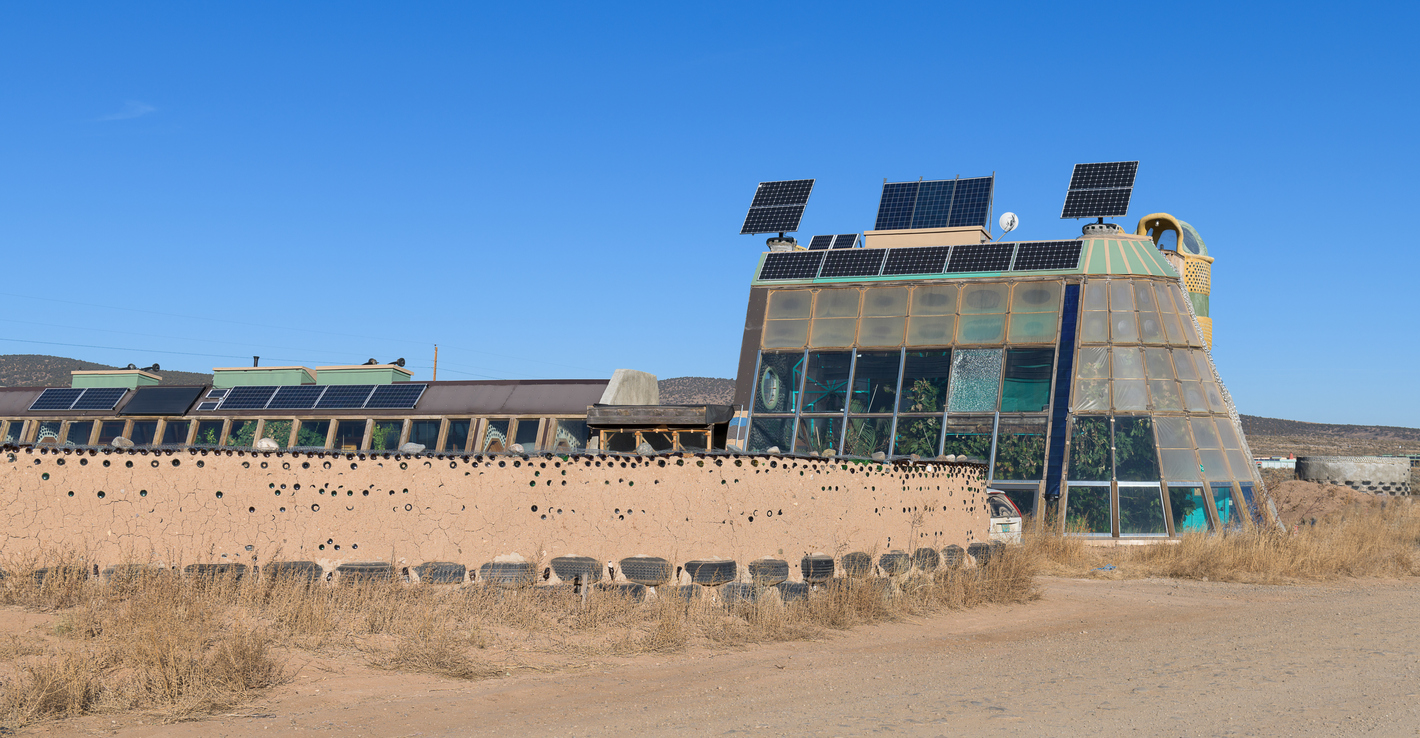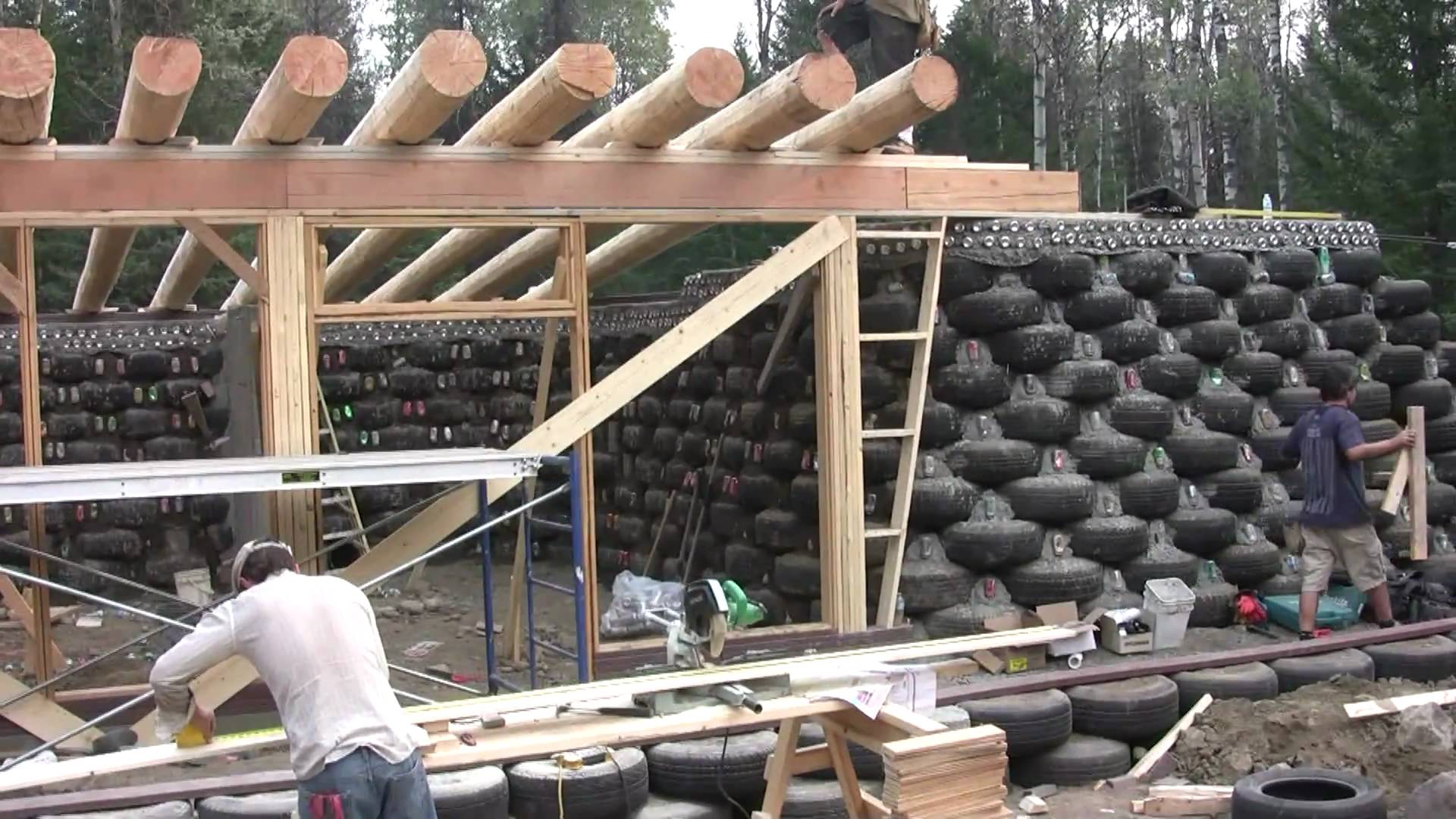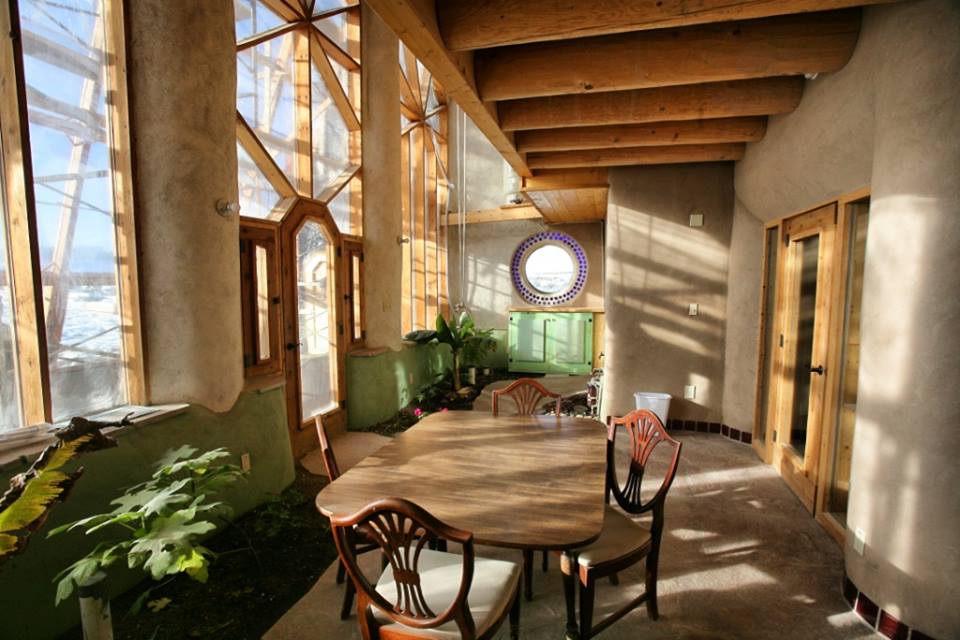We may earn revenue from the products available on this page and participate in affiliate programs. Learn More ›
If you’re curious about off-grid living, you may have heard of an Earthship. Earthship homes are built partially into the earth out of upcycled and natural materials and constructed to be able to maintain a comfortable temperature year-round without requiring a conventional HVAC system.
Earthship home design makes use of natural resources to build an ecologically friendly and sustainable home that has on-site sewage and water systems and food sources that allow residents to be completely self-sufficient. Here’s what you need to know about major Earthship design principles and building an Earthship house.
What Is an Earthship?

An Earthship is an off-grid home built with upcycled materials, like tires and metal, and natural materials, such as sand, mud, and wood.
Earthship homes are designed to provide a comfortable living environment year-round without the use of supplemental heating and cooling devices. With innovative design top of mind, these structures make use of the sun’s warmth, the coolness of the earth, and thermal mass principles to achieve this. Clean energy sources such as solar panels and wind power supply electricity for running household necessities.
Since they are constructed with natural and upcycled materials and designed around their natural surroundings, each Earthship house has a unique, one-of-a-kind appearance that makes it distinguishable not only from more traditional home styles, but also from other Earthship homes.
The 6 Principles of Earthship Design
Earthships were first developed by architect Michael Reynolds and follow six fundamental design principles. These principles are what make an Earthship home self-sustainable, durable against changes in climate, and non-reliant on traditional energy sources. These principles govern how to build an Earthship, as well as how to maintain one.

1. Passive Solar Heating and Cooling
Earthship houses do not need a typical HVAC system to heat and cool the indoor space in order for it to remain comfortable in most climates or locations. This is possible through passive solar heating and cooling.
When built with earth-filled repurposed tires, an Earthship is able to store heat, which essentially insulates it from the outside temperature. When built with tire walls on three sides and a south-facing wall of windows, Earthships use energy from the sun to heat up the building. When the temperatures drop at night, the walls release heat into the indoor space
For cooling in warmer climates, tire walls will stay cool since they are filled with dirt. Earthships are designed to maintain an indoor temperature of around 70 degrees at all times.
2. Solar and Wind Energy
Earthship houses do not use traditional energy sources and are not connected to the power grid. Instead, each Earthship has its own power system built on wind and solar energy sources. The key is to limit the electrical needs of the Earthship home to ensure the power system is affordable and supplies adequate electricity. It’s estimated that Earthship homes have about 25 percent of the electrical needs of a conventional home.
For example, maximizing the use of sunlight in the design limits the need for lights during the day. Although solar power is the primary source of energy for these homes, a home wind turbine system can also be installed, if appropriate.

3. On-Site Sewage Treatment
Another principle of Earthship design is on-site sewage treatment. These systems use edible plants to “treat” gray water—water that’s been used for laundry, bathing, and washing dishes, for example. That gray water is then reused in the home’s toilets. Blackwater—used toilet water—goes to a septic tank system and then to a botanical cell, from where landscaping plants then use the water.
4. Natural and Recycled Materials
Earthship homes are exclusively built with natural or recycled materials to reduce their environmental impact. Recycled tires are typically used to build sturdy walls, foundations, and even roofing systems. Reclaimed wood, bottles, metal, mud, and other natural and upcycled materials are also used to build an Earthship house.
Using these materials reduces the need to manufacture new products and also prevents existing used materials, such as tires, from otherwise ending up in landfills. Upcycled materials are often used to add flair and personality to an Earthship interior, as well.

5. Water Harvesting
An Earthship collects rainwater from its roof for use inside. The collected water is stored in large containers, also called cisterns or holding tanks. When needed, water from the holding tanks is pumped through a water filtration system, which makes the water drinkable and safe for indoor uses like cooking, bathing, and laundry.
6. Food Production
Although not entirely imperative to Earthship design, growing food in or adjacent to an Earthship is one of the best ways to make the home completely self-sustainable. Hydroponically grown edible plants also play an important role in filtering gray water, so it makes sense to take advantage of food production from these plants.
RELATED: 10 Innovative Materials Poised to Make Home Building More Sustainable
Earthship Construction Basics
Earthships are typically constructed using earth-filled tires on three walls and a wall of windows on the south-facing side of the home. This helps create the proper insulation for keeping the home at a comfortable temperature without using a conventional heating or cooling source.
Although you can build an Earthship yourself—Earthship architect Michael Reynolds offers training sessions through Earthship Academy—you can also pay someone to build one for you, with costs ranging from $20,000 to over $1 million (not including the price of the land on which the home is built).
The time it takes to build an Earthship home can vary as well. If you have an expert build it for you, it can take as few as four to six months. However, if you’re not an expert and choose to DIY the project, it can take considerably longer.
Pros and Cons of Living in an Earthship Home

As with any home, there are good aspects and not-so-good aspects of building and living in an Earthship house.
Pros
- Less dependence on local power grid and utilities
- Significantly reduced carbon footprint
- Potential positive psychological benefits of self-sufficiency
Cons
- Labor-intensive home maintenance
- Potentially expensive and time-consuming to buy or build
- Reselling an Earthship home can be challenging


